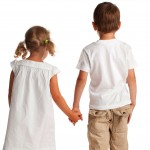
Parents who have a child with autism are understandably often very keen to find out the risk of subsequent children also having the condition. Until now, research studies estimated the risk to be between 3-10%, but this evidence was regarded as quite unreliable.
This cohort study conducted by researchers in California is the largest prospective investigation of siblings of children with autism spectrum disorders followed from infancy to pre-school age.
The researchers recruited participants from autism clinics in Canada and the USA. 664 infant siblings (≤18 months) of children with autism spectrum disorders (including autistic disorder, Asperger’s disorder or a pervasive development disorder not otherwise specified) were involved in the study. Participants had to have an older sibling with autism spectrum disorder (ASD) and no identified neurological or genetic condition that could account for ASD diagnosis.
The study followed up the siblings for 3 years and this is what they found:
- 132 infants met the criteria for autism spectrum disorder (ASD), which works out as an estimated recurrence rate of 18.7% (95% CI 13.34 to 25.5)
- 54 (40.9%) received a clinical diagnosis of autistic disorder
- 78 (59.1%) received a clinical diagnosis of pervasive developmental disorder not otherwise specified
- Autism spectrum disorder was more common in males than in females (26.2% males affected vs 9.1% females affected; RR 2.8, 95% CI 1.9 to 4.0)
- The risk of autism spectrum disorder was higher in children with two or more siblings with ASD than in children with only one sibling with ASD (32.2% in children with multiple affected siblings vs 13.5% in children with only one affected sibling; RR 2.2, 95% CI 1.4 to 3.3)
- The rate of autism spectrum disorder was also significantly higher in children with two or more siblings with ASD than in children who had one affected but at least one unaffected sibling (20.1%; p=0.002)
This study adds to our knowledge about the risks of autism, but it is not a perfect piece of research. The way that participants were recruited into the study was not a true population-based approach. It’s possible that selection bias could be at work in this study (e.g. concerned families may have been more keen to participate).
However, this research is more reliable than previous studies, so it certainly helps inform health professionals involved with screening, diagnosing or treating children with autism, as well as those who counsel parents of children who may have the condition.
Ozonoff S, Young GS, Carter A, Messinger D, Yirmiya N, Zwaigenbaum L, Bryson S, Carver LJ, Constantino JN, Dobkins K, Hutman T, Iverson JM, Landa R, Rogers SJ, Sigman M, Stone WL. Recurrence Risk for Autism Spectrum Disorders: A Baby Siblings Research Consortium Study. Pediatrics. 2011 Aug 15. 123:3 488-495.
